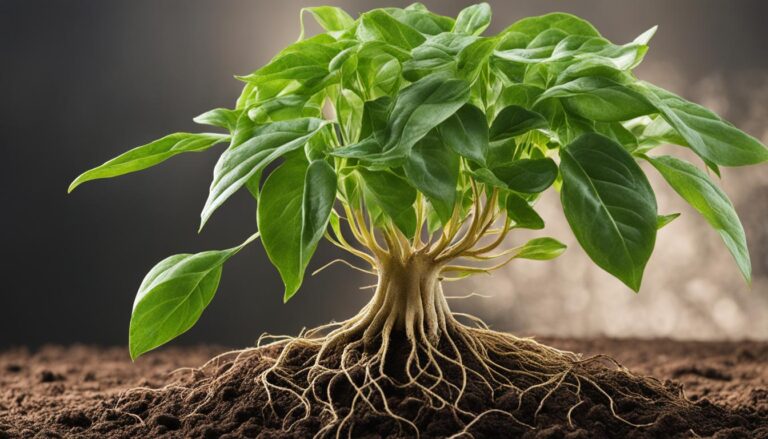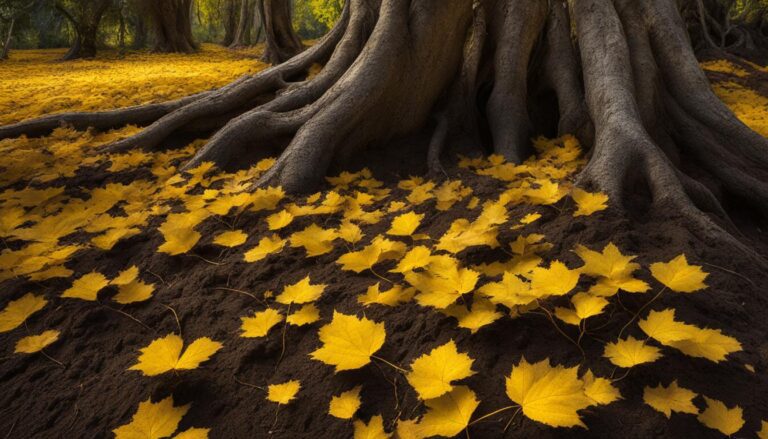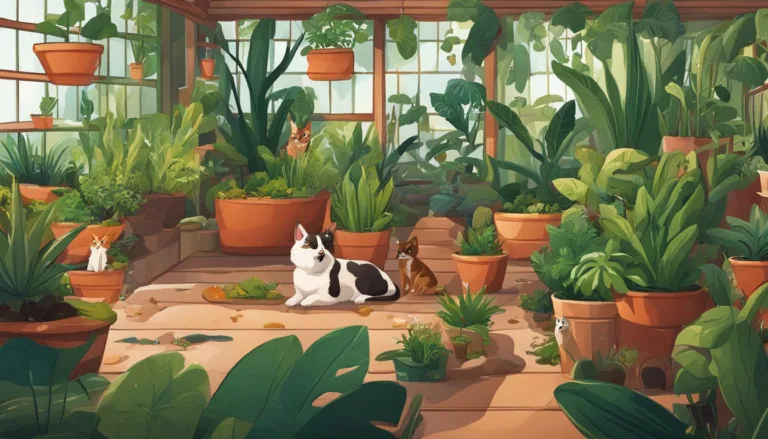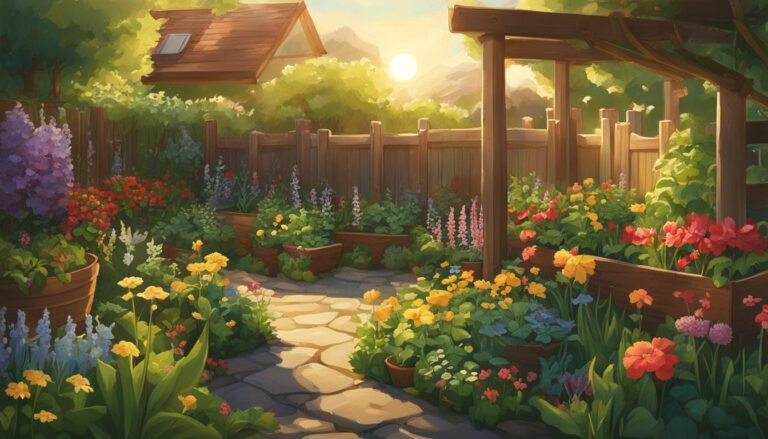
Are your plants showing signs of nutrient deficiency? Maintaining a proper nutrient balance is crucial for the healthy growth of plants. In this article, I will guide you on how to correct chlorine and sodium deficit in plants, ensuring they receive the essential nutrients they need for optimal development.
Key Takeaways:
- Correcting nutrient deficiency in plants is essential for their healthy growth.
- Chlorine and sodium are important elements in plant metabolism and balance.
- Deficiencies in these elements can cause chlorotic blotches, necrotic spots, and other symptoms.
- Excessive levels of sodium and chloride can lead to toxicity, damaging plant health.
- Regular monitoring and testing of sodium and chloride levels in the growing medium and water sources is crucial.
Function and Importance of Sodium and Chloride in Plants
When it comes to plant nutrition, sodium and chloride may not be considered essential elements, but they still serve important functions in plant growth and development.
Sodium, while not essential, can aid in metabolism and chlorophyll synthesis, making it beneficial for overall plant health. It can also act as a partial replacement for potassium and help regulate water balance in certain plants.
Chloride, on the other hand, plays a crucial role in plant metabolism, photosynthesis, osmosis, and maintaining ionic balance within cells.
While both sodium and chloride are typically viewed as waste ions, recent research has shown that plants do use these elements in small quantities, highlighting their importance.
Although plants do not require large amounts of sodium and chloride, their presence can have a significant impact on plant health and growth.
It is essential to consider these elements when managing plant nutrient balance and addressing nutrient deficiencies and toxicities.
Key Functions of Sodium and Chloride in Plants:
- Aiding in metabolism and chlorophyll synthesis
- Regulating water balance
- Supporting overall plant health and growth
- Contributing to plant osmosis and ionic balance
- Acting as partial replacements for essential elements
- Supporting plant metabolism and photosynthesis
While sodium and chloride are not considered essential elements for plants, their functions and importance should not be overlooked. Understanding how these elements contribute to plant health can help ensure optimal growth and prevent nutrient imbalances.
Symptoms and Effects of Sodium and Chloride Deficiency and Toxicity
In plants, sodium deficiency does not exhibit any specific symptoms as it is not an essential element. Chloride deficiency can occur if the growing medium consistently contains less than 2 ppm chloride.
This deficiency can lead to the development of chlorotic blotches and necrotic spots on younger leaves. In more severe cases, wilting may occur in affected plants.
On the other hand, excessive levels of sodium and chloride can result in toxicity. Sodium toxicity in plants can cause necrosis or scorching of leaf tips and margins.
Chloride toxicity symptoms typically start with premature yellowing of leaves, followed by marginal or tip necrosis and bronzing. It’s important to note that the sensitivity to sodium and chloride toxicity varies among different plant species.
To ensure optimal plant health, it is crucial to monitor sodium and chloride levels in the growing environment. Regular testing of the water source and growing medium can help detect any imbalances.
By maintaining appropriate levels of sodium and chloride, plants can avoid deficiencies and toxicities that can hinder growth and development.
| Deficiency Symptoms | Toxicity Symptoms |
|---|---|
|
|
Sources and Monitoring of Sodium and Chloride Levels in Plants
When it comes to the sources of sodium and chloride in plants, the main contributor is the water source.
Most water sources contain these elements in varying amounts, which are sufficient for plant growth. If there are concerns about excessive levels or deficits, it is essential to monitor and test the water for sodium and chloride levels.
Testing the water source is crucial to determine if it provides adequate levels of sodium and chloride. If the levels are below the recommended thresholds (50 ppm for sodium and 70 ppm for chloride), it may be necessary to supplement these elements through fertilizers.
Sodium can be found in trace amounts in certain fertilizers and pesticides, while chloride can be obtained through fertilizers such as calcium chloride, potassium chloride, ammonium chloride, or magnesium chloride.
To ensure optimal sodium and chloride levels in plants, it is important to regularly monitor their levels in the growing medium and water. Excessive levels of these elements can lead to toxicity and compete with other beneficial nutrients for uptake by the plants.
If sodium or chloride levels in the water exceed certain thresholds (150 ppm for sodium and 200 ppm for chloride), one effective method to remove these excessive ions is through reverse osmosis.
Implementing regular testing and appropriate management practices can help maintain the proper balance of sodium and chloride in plants and prevent deficiencies or toxicities.
| Sodium Levels | Chloride Levels | |
|---|---|---|
| Water Source | Varies, typically sufficient | Varies, typically sufficient |
| Recommended Thresholds | Below 50 ppm | Below 70 ppm |
| Excessive Levels | Above 150 ppm | Above 200 ppm |
| Supplementation | Trace amounts in fertilizers and pesticides | Calcium chloride, potassium chloride, ammonium chloride, or magnesium chloride fertilizers |
Remediation and Prevention of Sodium and Chloride Deficiency and Toxicity
To address sodium and chloride deficiencies in plants, it is crucial to ensure that the water source and fertilizers contain adequate levels of these elements.
Regular testing of soil and water can help identify any deficiencies and guide appropriate remedial measures. Utilizing salt-tolerant plant species can help prevent deficiencies and ensure optimal growth.
For soils affected by salinity, leaching is an effective method to reduce salt buildup. This involves applying low-salt water to flush out excess salts deeper into the soil.
In addition, improving soil drainage, adding gypsum to displace sodium ions, and maintaining a healthy pH range can help alleviate sodic soil conditions.
To prevent salt buildup, mulching is a valuable technique. Applying mulch around plants helps reduce evaporation, maintain soil moisture, and prevent the accumulation of salts near the surface.
Minimizing the use of fertilizers and adopting controlled irrigation practices can also contribute to preventing sodium and chloride toxicity.
Regular monitoring of sodium and chloride levels in the growing medium and water is essential to prevent toxic levels.
By implementing appropriate management practices and staying vigilant about potential deficiencies and toxicities, growers can maintain the balance of these essential elements in plants, ensuring healthy growth and optimal nutrient uptake.
FAQ
Are sodium and chloride essential elements for plants?
No, sodium and chloride are not considered essential elements for plants, but they do have important functions in plant growth and development.
What are the symptoms of sodium and chloride deficiency in plants?
Sodium deficiency does not exhibit specific symptoms, while chloride deficiency can cause chlorotic blotches and necrotic spots on younger leaves.
What are the symptoms of sodium and chloride toxicity in plants?
Sodium toxicity can cause leaf scorching and necrosis, while chloride toxicity starts with premature yellowing of leaves, followed by necrosis and bronzing.
Where do plants get sodium and chloride from?
The main source of sodium and chloride for plants is commonly found in most water sources. They can also be found in trace amounts in fertilizers and certain pesticides.
How can I monitor sodium and chloride levels in plants?
It is important to test the water source for sodium and chloride levels. Regularly monitor the salt levels in the growing medium and water to ensure they do not reach toxic levels.
What can I do to correct sodium and chloride deficiencies in plants?
Ensure that the water source and fertilizers provide sufficient levels of sodium and chloride. Implement strategies like leaching and improving soil drainage to correct sodic soils.
How can I prevent sodium and chloride toxicities in plants?
Prevent salt buildup by applying mulch to reduce evaporation and minimizing fertilizer applications. Use salt-tolerant plant species and avoid sprinklers when irrigating with salty water.






